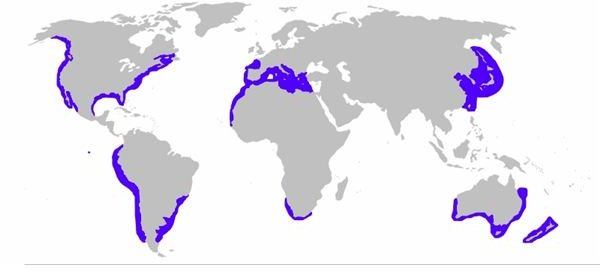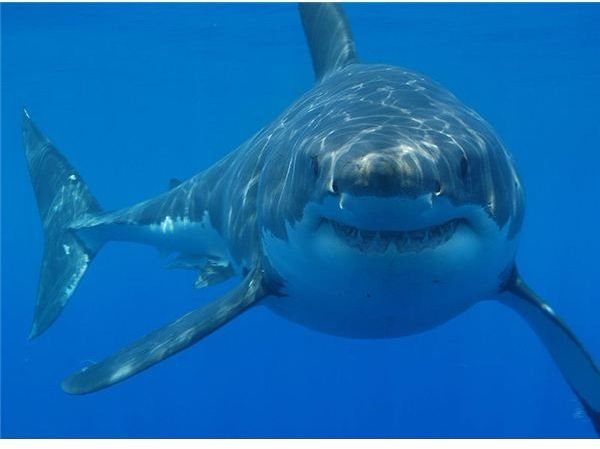Facts About Great White Sharks: Find Interesting Information on this Amazing Fish
The Great White Shark
The great white shark is the largest predatory fish in the world. Although these sharks are responsible for the most attacks on humans, they are not as vicious as once believed. In fact, divers are known to swim freely around the great whites without incidence. When they do attack, which is not often, it is thought that the shark mistakes the human as prey and will often release the person and swim away after realizing its mistake. Continue reading for more interesting facts about great white sharks.
Description
The great white shark got its name because of its massive size and white underbelly. These amazing creatures are about 15 feet in length but can grow to more than 20 feet. Their average weight is around 2,000 pounds but can reach over 5,000 pounds. Females are normally larger than males. They have torpedo-shaped bodies and rows of razor-sharp teeth. The lower teeth allow them to grab and hold prey and the upper teeth are used to cut prey.
Habitat

White sharks can be found in tropical and cold temperature waters throughout the world. Normally they stay offshore but will occasionally move inshore to hunt food. According to tracking devices, they do migrate long distances.
Diet
Prey includes seals, sea lions, dolphins, small toothed whales, sea turtles, rays and even other sharks. It is believed that great whites prefer fatty, energy-rich animals because they have been seen to selectively feed on blubber, and not muscle, of whales. It has also been observed that a white shark will let others of its kind feed off its kill.
Reproduction
Great white sharks are ovoviviparous, meaning the mother gives birth to live pups after the eggs hatch inside her body. It is not sure how long the gestation period is but it is believed to last up to a year and a half. Litter sizes vary from 2 to 10 pups. At birth, the pups are roughly 4 to 5 feet long, weigh around 60 pounds and are ready to hunt. Females are thought to breed only once every 2 to 3 years.
Conservation
It is not known how many white sharks exist but it has been estimated that their population has declined by 80 percent in recent years. They are often killed by humans for their teeth and for sport. The great white is listed as an endangered species.
More Information
The following are more interesting facts about great white sharks:
• They can swim up to 15 mph.
• They can sense a small amount of blood in the water up to three miles away.
• Great whites are cartilaginous fish, meaning their skeletons are made of cartilage instead of bone.
• Their ancestors, now extinct, were three times their size and had teeth that were six inches long.
• The white shark is an apex predator, meaning it has very few predators. The killer whale (orca) is known to be one of them.
• They are believed to live more than 30 years.
References
https://animals.nationalgeographic.com/animals/fish/great-white-shark.html
https://www.aqua.org/downloads/pdf/Great_White_Shark.pdf
https://www.flmnh.ufl.edu/fish/gallery/descript/whiteshark/whiteshark.html
https://www.mesa.edu.au/seaweek2005/pdf/infosheet06.pdf
Photo Credit
https://commons.wikimedia.org/wiki/File:Great_white_shark_south_africa.jpg
https://commons.wikimedia.org/wiki/File:Great_White_Shark_Distibution_map.png
